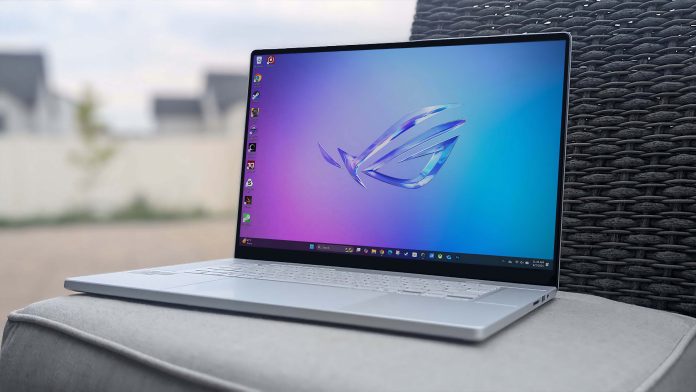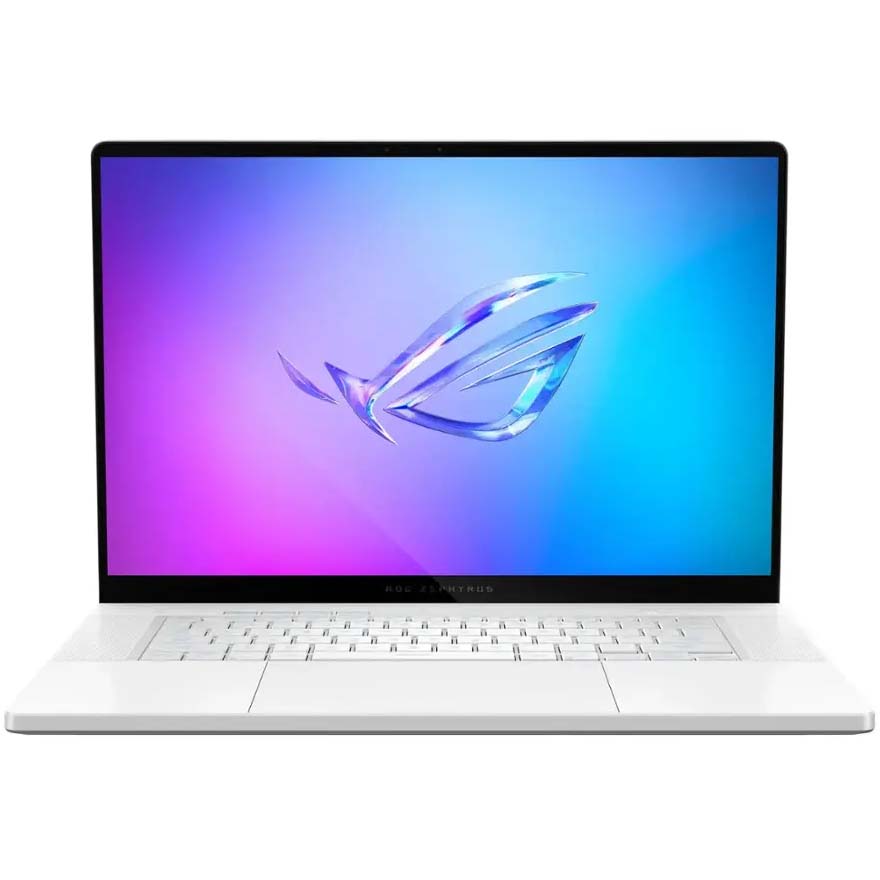Windows Central Verdict
The ROG Zephrus G16 (GU605C) is a competitive gaming laptop alternative to the Razer Blade 16. It’s more than capable of keeping up with AAA gaming as well as your daily work or school workflows. The simple design with Slash lighting on the lid looks good in casual and formal settings, too. Just be aware that the fans can get a bit whiny and parts ot the laptop get very hot to the touch.
Pros
- +
Great mic and speakers
- +
Solid performance with gaming and everyday workflows
- +
Beautiful design
Cons
- –
Fans are whiney when playing intensive programs
- –
Parts of the laptop get very hot to the touch
Why you can trust Windows Central Our expert reviewers spend hours testing and comparing products and services so you can choose the best for you. Find out more about how we test.
Over the last couple of weeks, I’ve been using the ASUS ROG Zephrus G16 (GU605C, 2025) as my main work and gaming laptop.
What I said about last year’s Zephyrus G16
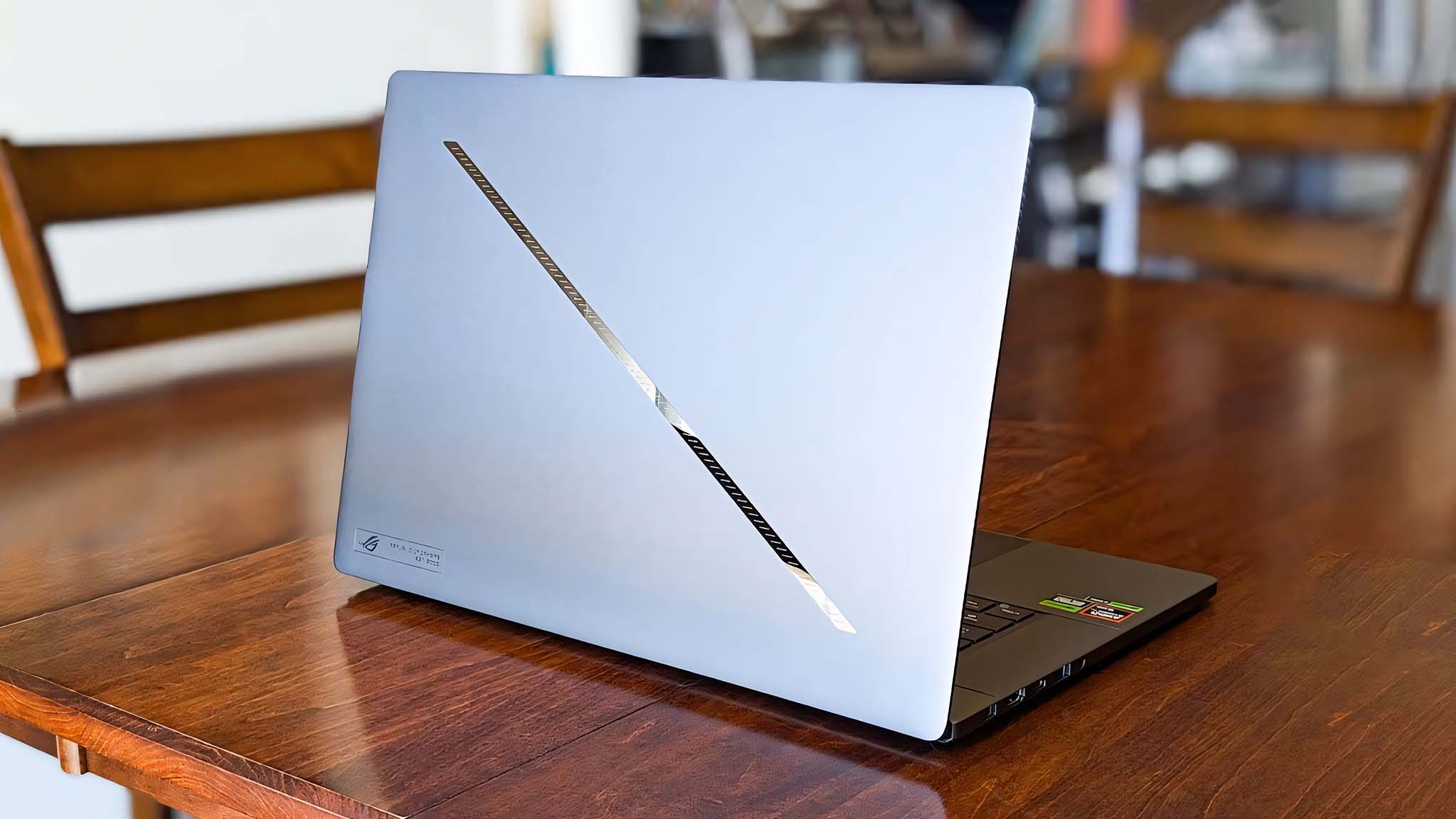
In my ASUS ROG Zephyrus G16 (2024) review, I highlighted the laptop’s beautiful 240Hz OLED display and solid RTX 40-Series gaming performance. It wasn’t nearly as powerful as some of its rivals (like the Razer Blade), but it got the job done at a lower price.
Where the ROG Strix line of gaming laptops focuses on raw gaming power, the ROG Zephrus line offers more of a balance between performance and portability. As such, it’s designed more for people who want to use a laptop for regular school, office, or personal use as well as gaming.
From my testing and my time spent with the ROG Zephyrus G16 (GU605C), I can say it mostly hits its goals of offering portable yet solid gaming performance, but there are a few ways it can definitely still be improved upon in future iterations.
Let’s discuss how its strengths and improvement areas impact day-to-day usage, based on my own experiences with this gaming laptop.
Why You Should Trust Me

I own several gaming handheld PCs, including Steam Deck, ASUS ROG Ally, Legion Go, Legion Go S (Windows), and more. My experience and love of gaming make it so that I know exactly what makes for a good handheld gaming PC.
This review was made possible thanks to a review sample provided by ASUS ROG. The company had no input nor saw the contents of this review prior to publication.
My ASUS ROG Zephyrus G16 (2025) review
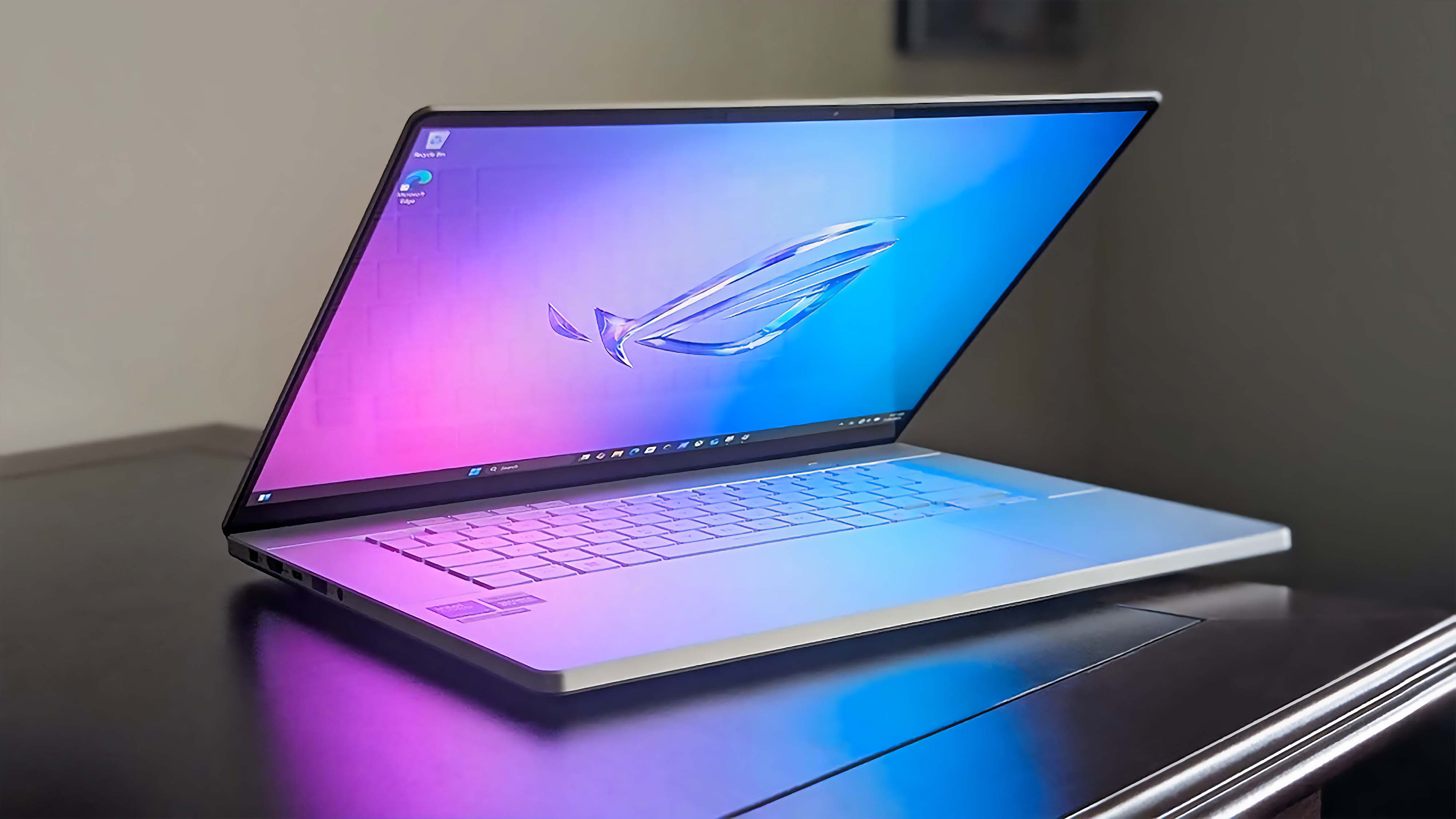
The ROG Zephyrus G16 GU605C has a starting price of $2,799.99 at Best Buy, but at the time of writing, there are multiple configurations available that can put the laptop as high as $4,599.99 at ASUS.
If you don’t need as big of a screen, you might want to check out our ROG Zephrus G14 (2025) review. This 14-inch laptop has a starting price of $2,099.99 at Best Buy.
DESIGN ⭐⭐⭐⭐⭐
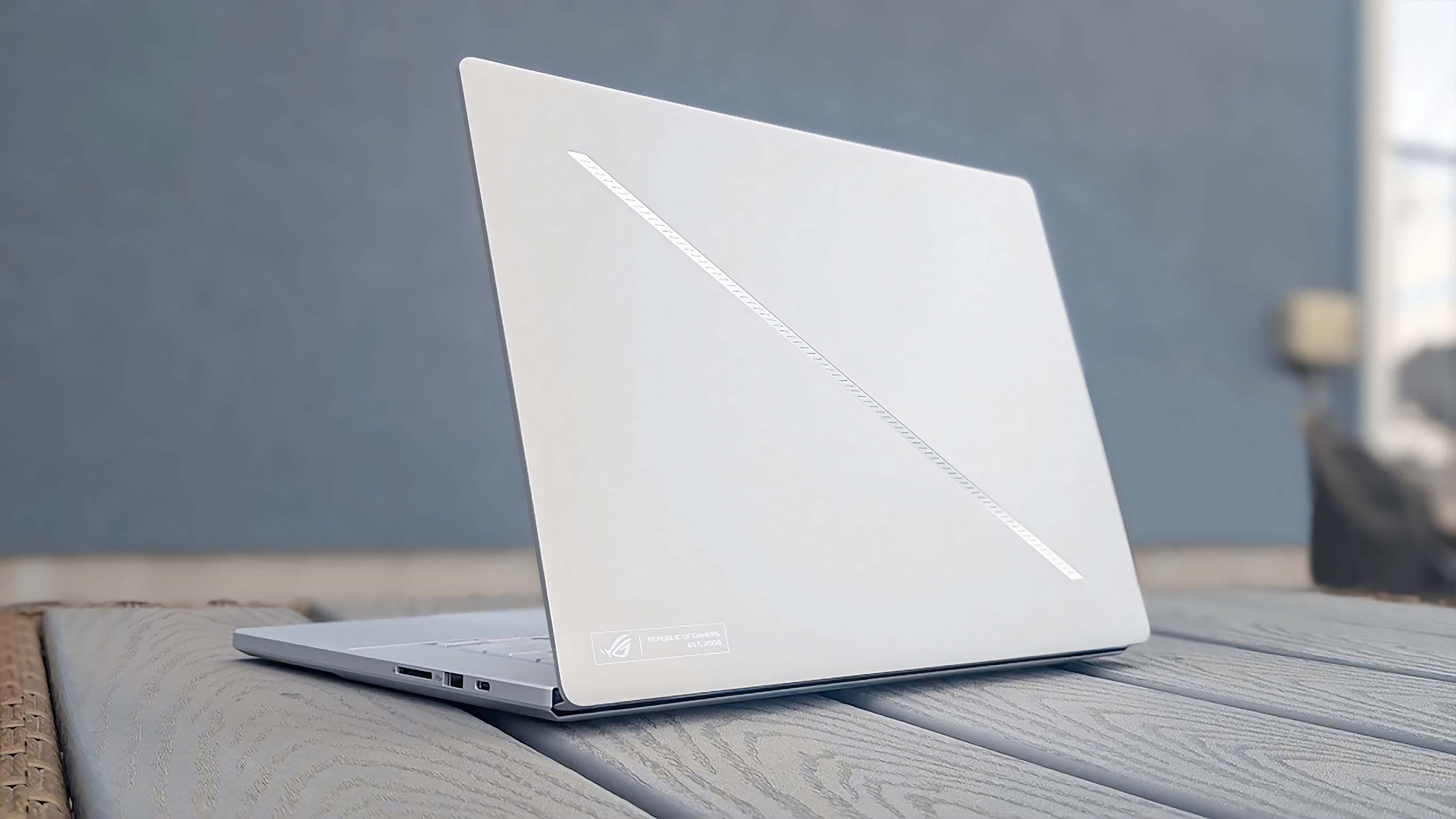
One of the things I appreciate most about the Zephyrus G16 design is that this 16-inch laptop doesn’t look like a gaming laptop. While I’m set up at a cafe, its more elegant design allows me to blend into a crowd without any flashy RGB lighting needing to be toggled off.
ASUS ROG Zephyrus G16 (GU605C) specs
• Price: $2,799.99 at Best Buy
• Display: 16-inch (2560 x 1600) OLED, non-touch, 240Hz, 0.2ms response time
• CPU: Intel Core Ultra 9 Processor 285H (16 cores, 16 threads)
• GPU: NVIDIA GeForce RTX 5070 Ti
• NPU: Intel AI Boost
• Memory: 32GB LPDDR5 RAM
• Storage: 2TB SSD
• Connectivity: Wi-Fi 7 + Bluetooth
• Ports: 1x Thunderbolt 4 USB-C DisplayPort, 1x USB-C 3.2 Gen 2, 2x USB-A 3.2 Gen 2, 1x HDMI 2.1, 1x SD Card Reader, 1x 3.5mm headphone jack
• Size: 14.99 x 246.89 x 354.84mm (0.59 (H) x 9.72 (W) x 13.97 inches (L))
• Weight: 1.95kg (4.3 lbs)
In fact, the Slash Lighting going diagonally across the lid only glows white and looks rather chic when static or even turned off. That said, I do think most of the other Slash Lighting effects available are a bit too frantic and even put me in mind of how destroyed tech looks in films, with blinking lights everywhere. But you can decide for yourself how you feel about these lighting effects.
Meanwhile, the white coloring on the chassis and keyboard not only looks classy, but also prevents fingerprint smudges from showing up, unlike some other ASUS laptops.
Port-wise, the Zephyrus G16 offers a healthy range of connections so you can use your various accessories or additional monitors as you wish.
DISPLAY ⭐⭐⭐⭐⭐
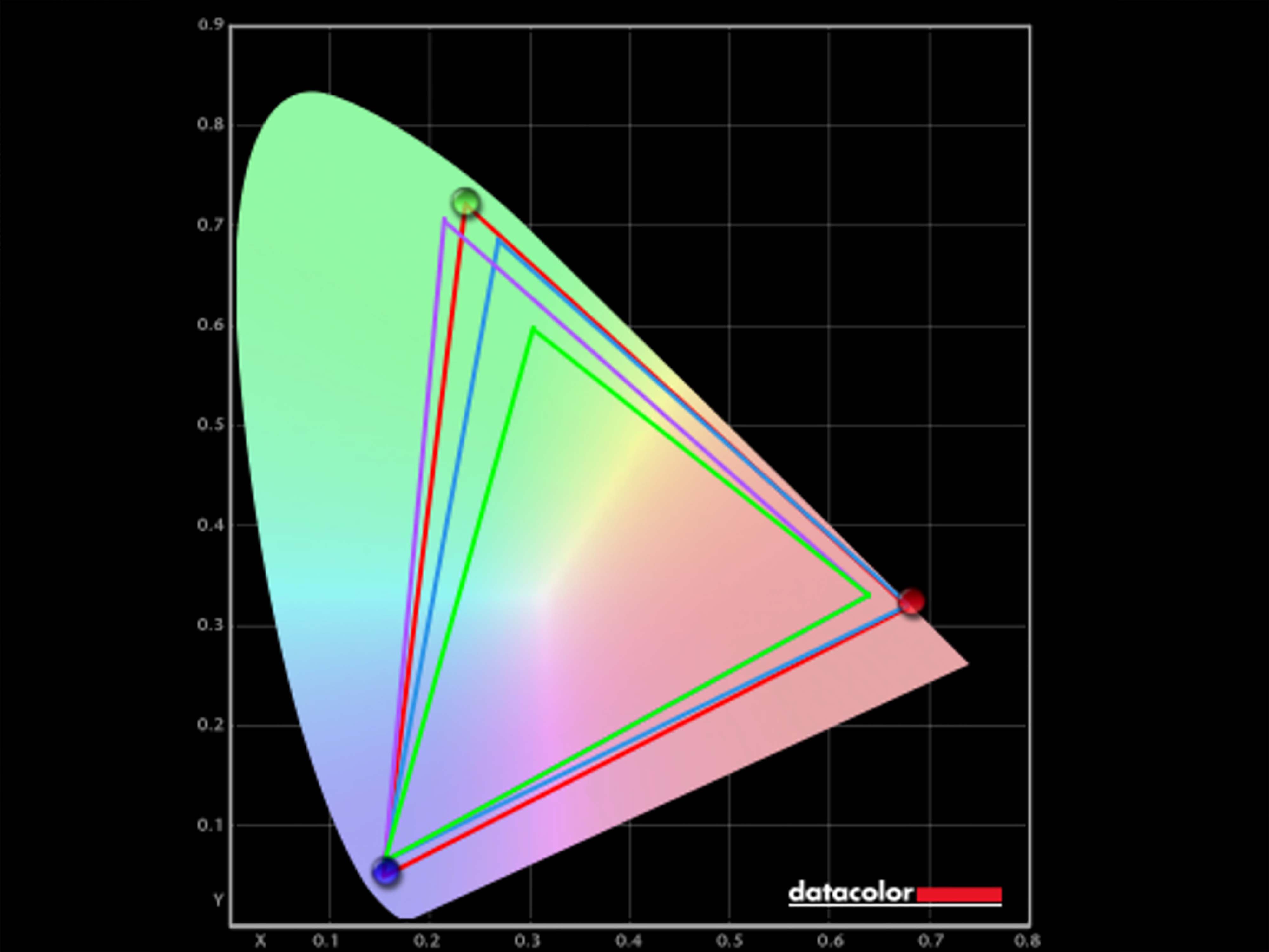
I expect a lot from OLED displays, and the Zephyrus G16’s 16-inch OLED didn’t disappoint when it comes to color, contrast, and motion clarity.
In a color gamut test, it produced a fantastic 100% of sRGB, 96% of AdobeRGB, and 100% of P3. My colorimeter also registered its minimum brightness at 21 nits and its max brightness above 400 nits, which is pretty typical for an OLED panel.
Motion clarity also proved fantastic in my gaming sessions, which is no surprise given that the display supports up to 2.5K resolution with a speedy-fast 240Hz refresh rate and quick 0.2ms response time.
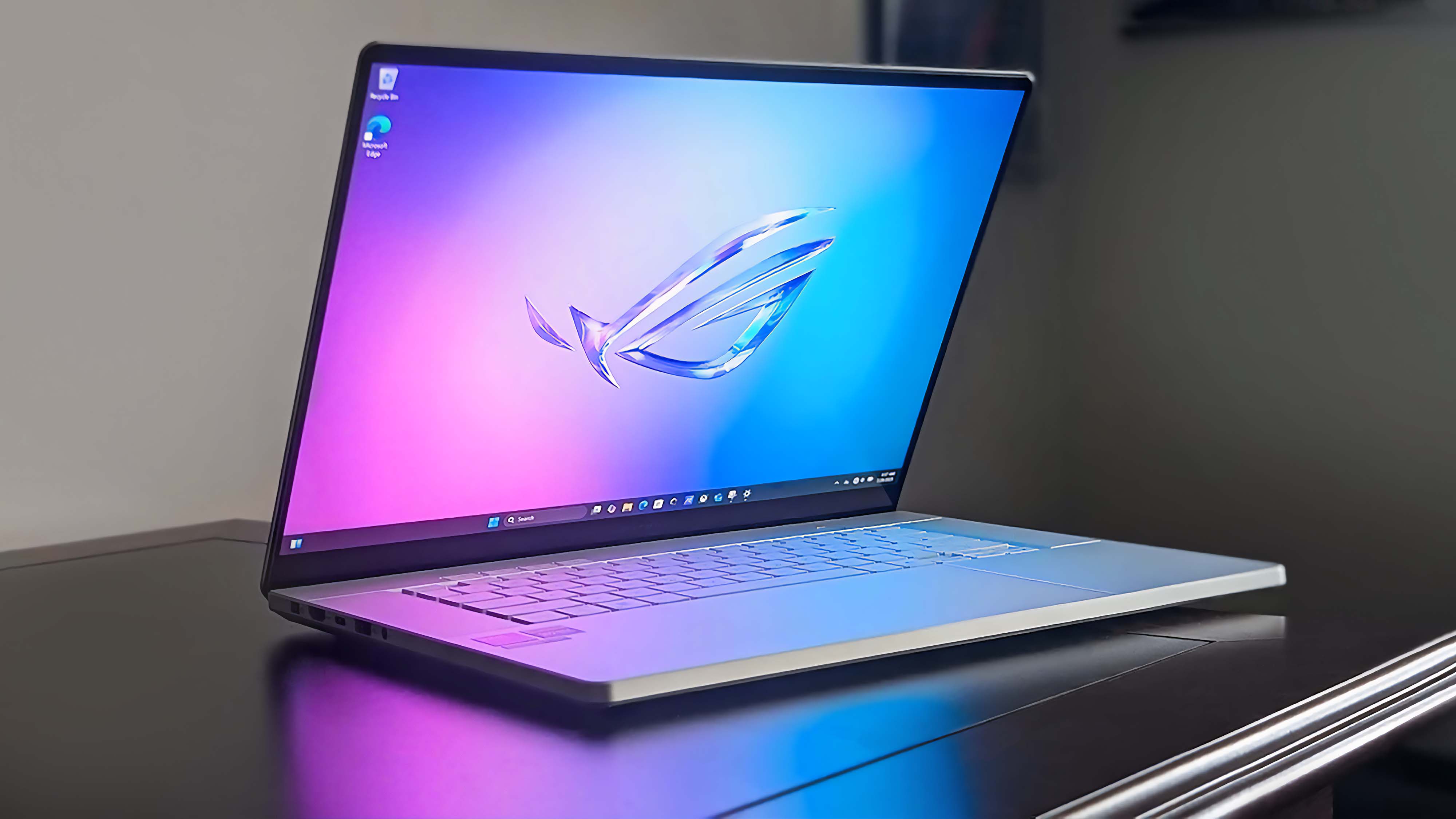
It should be noted that by default, this laptop is set up to change its resolution or even change its screen, sleep, and hibernate timeouts, even if you set them to something specific in Windows settings. You can change this by going into ASUS’ Armoury Crate program and adjusting some settings there.
PERFORMANCE ⭐⭐⭐⭐
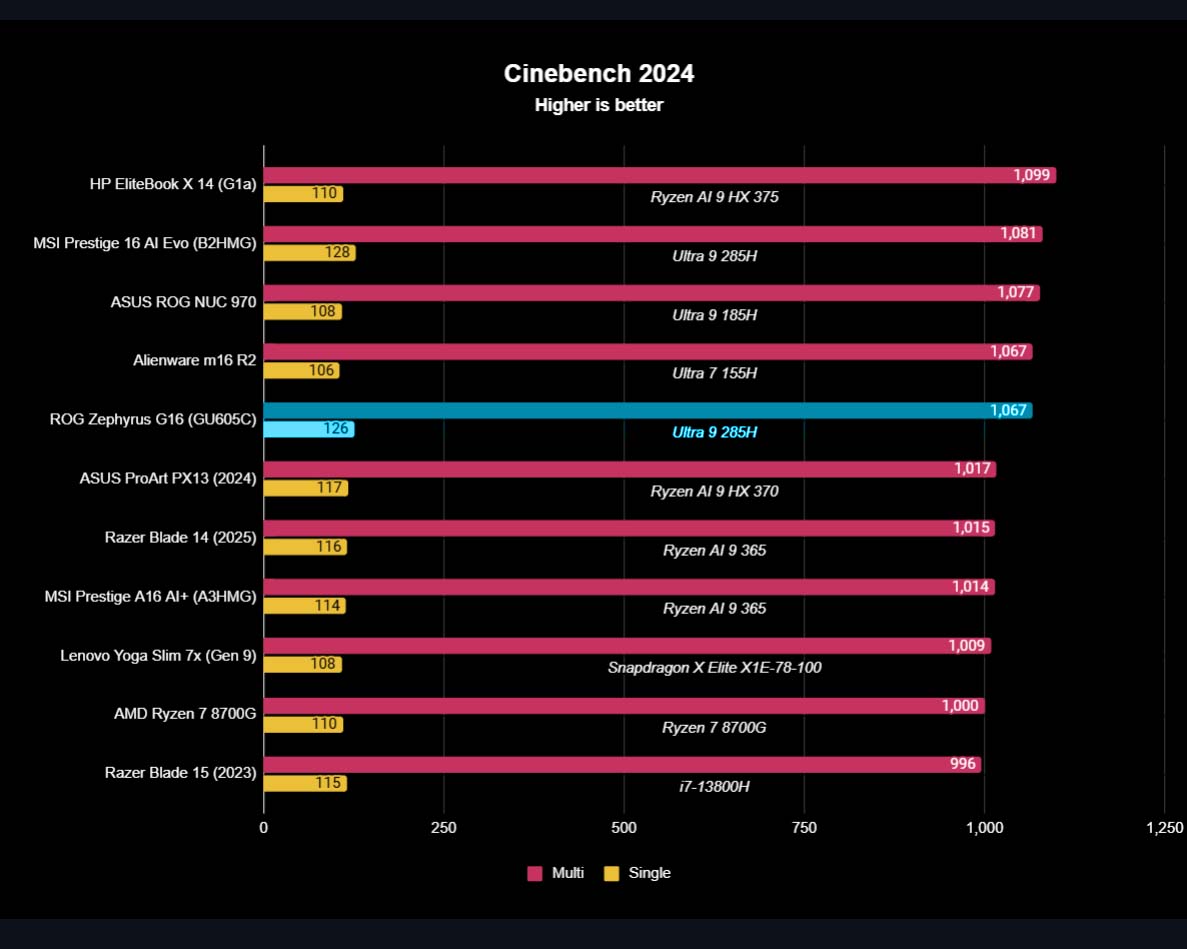
During my time with the Zephyrus G16, it worked smoothly whether I was attending video calls, writing up assignments, streaming shows, or gaming. The scores and results it earned through benchmark testing further proved that it’s a solid device.
- Cinebench R24: 1,067 multicore score, 126 single-core score
- Geekbench 6: 16,183 multicore score, 2,885 single-core score
- CrystalDiskMark: Read 6,336 MB/s, Write 5,861 MB/s
- 3DMark Time Spy: 4,667
- CrossMark: 2,058
- Handbrake: 1,756
Gaming benchmarks
- Ashes of the Singularity — 97 FPS (Normal preset, 1080p resolution, 240Hz refresh rate, V-sync enabled)
- Ashes of the Singularity — 63.6 FPS (Heavy preset, 1080p resolution, 240Hz refresh rate, V-sync enabled)
- Cyberpunk 2077 — 73.23 FPS (Ray Tracing: Low preset, Path Tracing and Ray Reconstruction disabled, 1600p resolution, 240Hz, V-sync disabled, Intel Xe Super Sampling 1.3 set to “Auto,” frame generation disabled)
- Cyberpunk 2077 — 31.89 FPS (Ray Tracing: Overdrive preset, Path Tracing and Ray Reconstruction enabled, 1600p resolution, 240Hz, V-sync disabled, Intel Xe Super Sampling 1.3 set to “Auto,” frame generation disabled)
- Shadow of the Tomb Raider — 147FPS (High preset, 1080p resolution, V-sync enabled)
- Shadow of the Tomb Raider — 142 FPS (Highest preset, 1080p resolution, V-sync enabled)
THERMALS & FAN NOISE ⭐⭐⭐

As far as thermals and the cooling system go, the area above the keyboard gets incredibly hot and is uncomfortable to touch due to the heat it radiates. After running a 20-minute CPU stress test, my thermal camera showed that the laptop peaks at 125°F (~51.7 °C) above the keyboard and at its back vents.
Of course, these are areas you don’t typically rest your hands when using the laptop, but it’s good to be aware of.
The G16’s noise peaked at 47.8dB when I held my decibel meter near my ear as I sat in front of the laptop, but peaked at 61.8dB when held next to the back vents. The fans are slightly whiny, especially when playing more demanding programs, which can be frustrating to hear for long periods.
BATTERY LIFE ⭐⭐⭐⭐
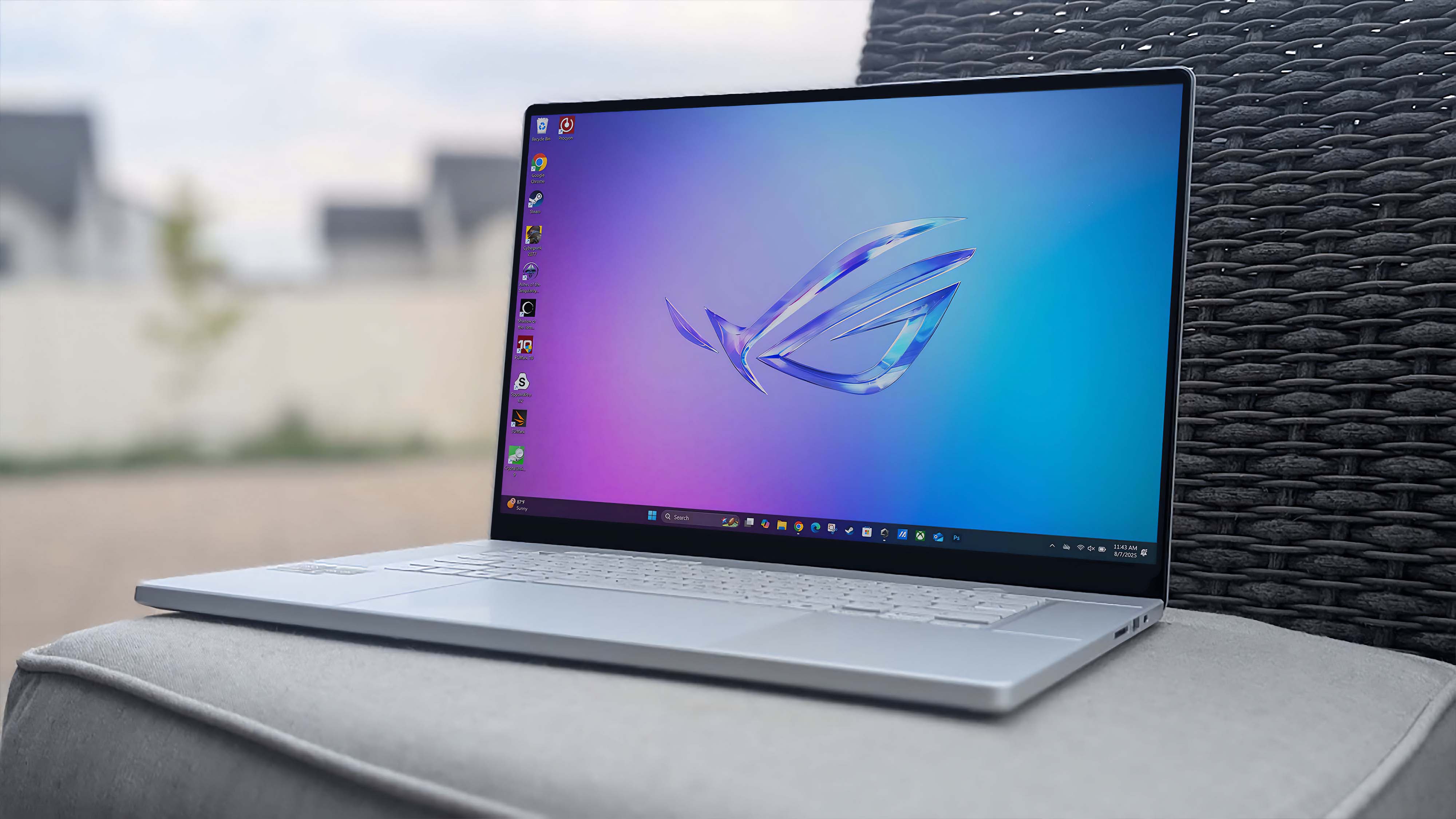
When I did typical office workflows like attending video meetings, writing up articles, and browsing the internet with the screen at around 200 nits brightness, the laptop only tended to last about seven hours and 37 minutes, which is not even a full work day, and also shorter than the Razer Blade 16 (2025)‘s battery life.
Meanwhile, playing more graphically demanding games reduced battery life to around only an hour and 28 minutes, which is within an expected range for a gaming laptop.
KEYBOARD & TOUCHPAD ⭐⭐⭐⭐
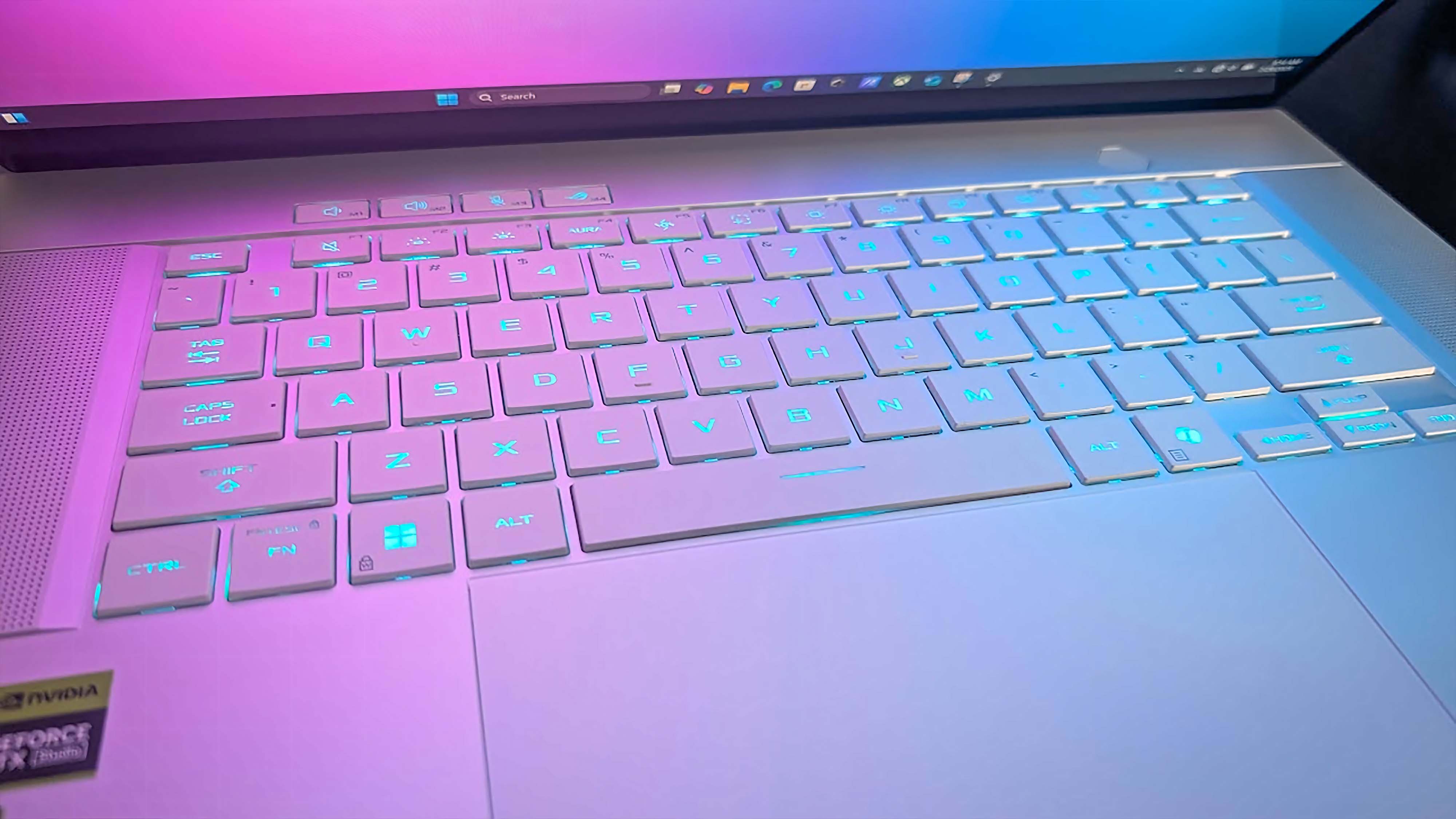
The G16’s 2025 model has the same chassis and keyboard design as last year’s, which means the keys still press in nicely, are responsive, and feel great to type on. What’s more, the customizable backlighting looks great.
I appreciate that this laptop not only offers helpful Function keys but also makes it easy to access the volume and mute controls above the main keyboard.
Meanwhile, the large touchpad makes it very easy to navigate around the screen without having to do any unnecessary extra swiping.
ASUS ROG Zephyrus G16 (GU605C): Should you get it?
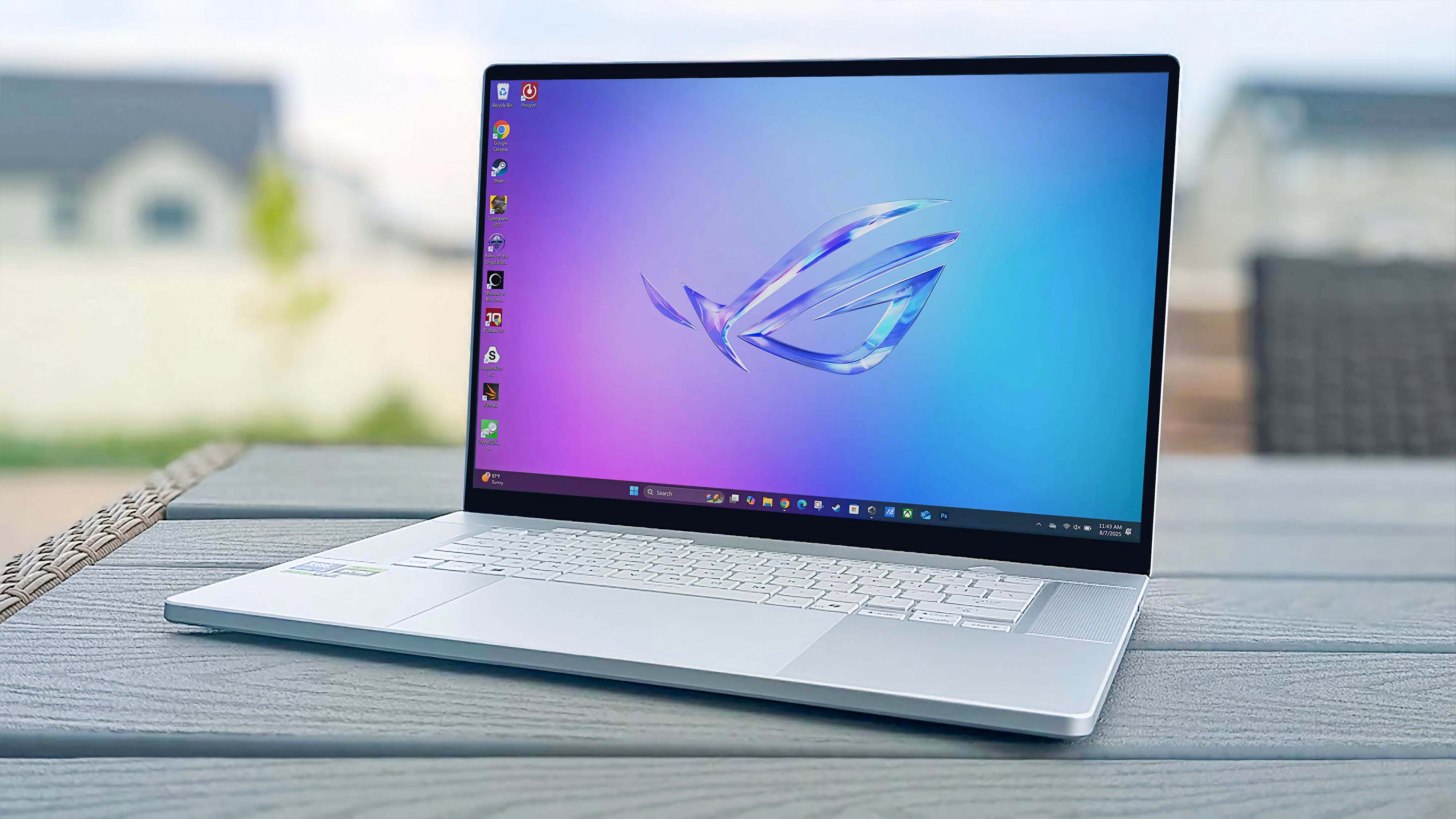
✅ You should buy this if …
- You want a laptop that’s good for everyday use and gaming
With its simple-chic design, you don’t immediately recognize the G16 as a gaming laptop, but it still offers solid performance for everything from homework and office use to AAA gaming.
❌ You should not buy this if …
- You really don’t like the sound of whining fans
While the Zephyrus G16 offers fantastic GPU performance, the fans kick off pretty loudly and create a noise that can be offputting.
All in all, the 2025 version of the ROG Zephyrus G16 is a solid option for work and play. I love how sleek it looks, with a design that doesn’t immediately scream “I’m a gamer” like some of the best gaming laptops.
What’s more, it offered steady performance whether I was working in Photoshop, writing articles, or playing Baldur’s Gate 3.
This base configuration is definitely costly, but it will easily serve most people’s needs without requiring you to purchase one of the pricier Zephyrus G16 configurations.
The biggest downside is the whiny fans, which can be relatively distracting, especially if you’re averse to that kind of sound. Of course, if you have headphones in or the speakers are playing something, you might not hear it.
“>
You must confirm your public display name before commenting
Please logout and then login again, you will then be prompted to enter your display name.
